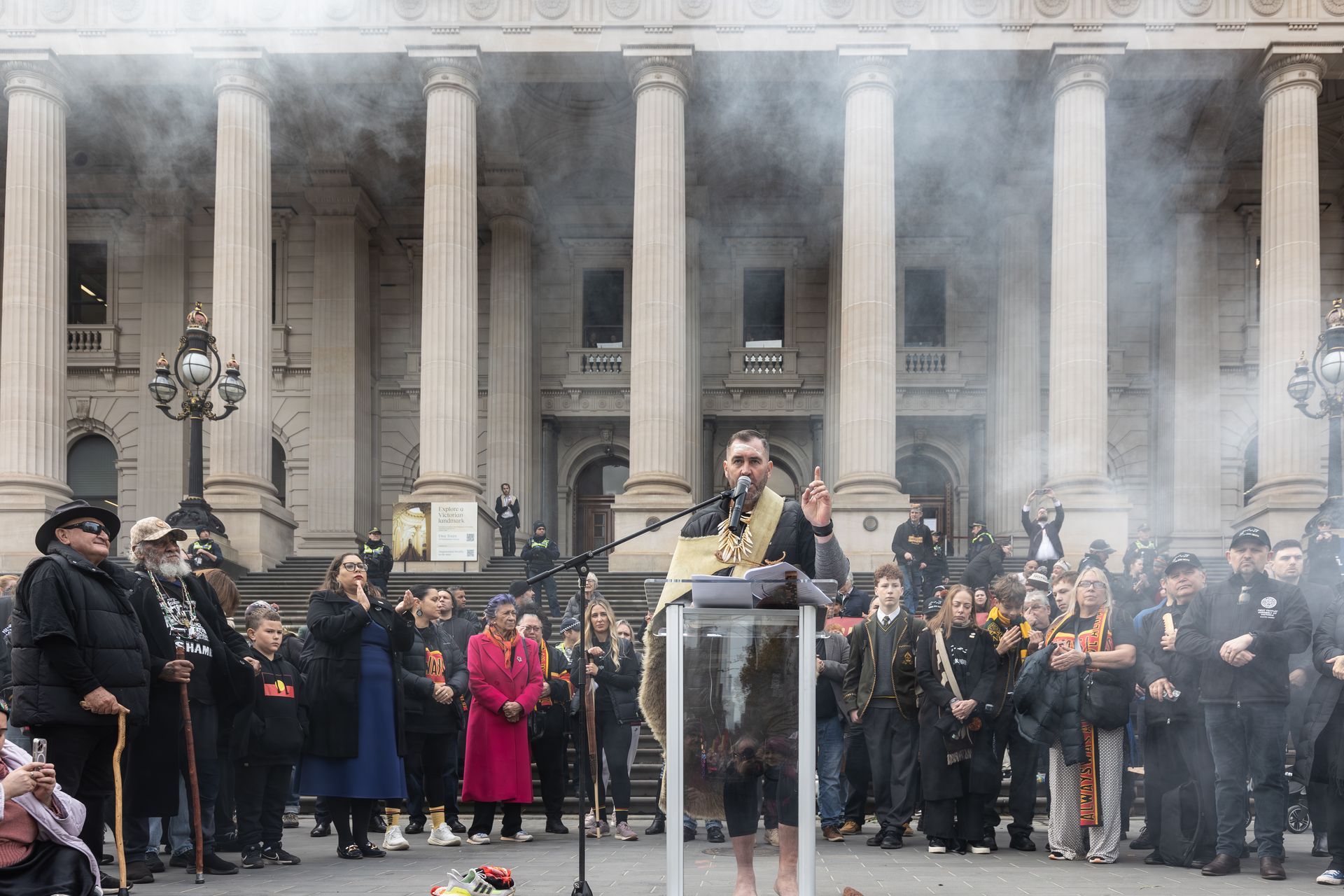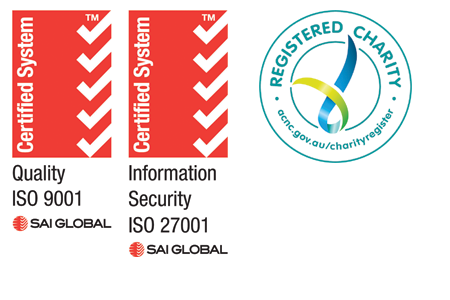Listening to First Nations health experts
By Andrew Masterson

Pictured: Travis Lovett for the Yoorrook Walk for Truth at Parliament (Image credit: Leigh Henningham)
While developing its HNA, NWMPHN commissioned the Victorian Aboriginal Health Service (VAHS) to conduct community consultations with Aboriginal people in the region.
This was the first time we had engaged an Aboriginal Community Controlled Health Organisation to collect data for an HNA. The project was grounded in self-determination: VAHS had full autonomy to design the approach and method for the community engagement, the questions and interpretation and analysis.
VAHS spoke with 62 people through a series of seven group and 12 individual yarning sessions held across the region. Each person had unique experiences and stories to share, while aiming to answer these questions: What is the current health status of the community? What does good look like?
Once the conversations had been concluded and the results synthesised, VAHS wrote, designed and published a unique and detailed document called the Aboriginal Community Consultation Outcomes Report 2024.
The report contained a series of considered recommendations for NWMPHN, all geared to boosting the organisation’s ability to more deeply engage with First Nations communities.
Among the matters raised was the suggestion that NWMPHN develop quality improvement opportunities for GPs, encouraging them to develop culturally safe practices and forge partnerships with Aboriginal experts.
The provision of culturally safe health services is a theme deeply embedded in the report, which recommends changes or additions to information contained on HealthPathways Melbourne and in all commissioning documents, such as expressions of interests and requests for tender.
Other recommendations focused on the need to improve opportunities for Aboriginal Health Workers in recruitment, retention and training.
NWMPHN welcomed the report and is currently examining processes and opportunities for implementing VAHS’s findings.
“Working with VAHS and other Aboriginal community health organisations and learning how and why health priorities are framed within First Nations communities is extremely important for NWMPHN’s commitment to access and equity,” said Ashlee Bailey, NWMPHN’s Manager, Population Health and Planning.
“We recognise that primary health networks, as well as other institutions, must work hard to recognise disadvantage embedded in the sector and work even harder to decolonise the system.”



